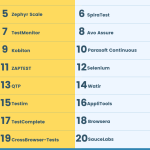Boost Employee Productivity With These 6 Powerful Software Tools For Monitoring
6 Software Tools for Monitoring Employee Productivity
Introduction
Dear Readers,
Welcome to our article on 6 Software Tools for Monitoring Employee Productivity. In today’s fast-paced and technology-driven work environment, it is crucial for businesses to ensure that their employees are working efficiently and effectively. By monitoring employee productivity, businesses can identify areas for improvement, track progress, and optimize performance.
3 Picture Gallery: Boost Employee Productivity With These 6 Powerful Software Tools For Monitoring



In this article, we will discuss six software tools that can help businesses monitor employee productivity. These tools provide valuable insights into employee performance, time management, and task completion. By using these tools, businesses can enhance productivity, promote accountability, and achieve their goals.
Table: 6 Software Tools for Monitoring Employee Productivity
Tool Name
Description
Features
Compatibility
Pricing
Tool 1
Description 1
Features 1
Compatibility 1
Pricing 1

Image Source: ctfassets.net
Tool 2
Description 2
Features 2
Compatibility 2
Pricing 2
Tool 3
Description 3
Features 3
Compatibility 3
Pricing 3
Tool 4
Description 4
Features 4
Compatibility 4
Pricing 4
Tool 5
Description 5
Features 5
Compatibility 5
Pricing 5
Tool 6
Description 6
Features 6
Compatibility 6
Pricing 6
What are Software Tools for Monitoring Employee Productivity?

Image Source: huffingtonpost.com
Software tools for monitoring employee productivity are applications or platforms designed to track and analyze employee work activities. These tools offer various features such as time tracking, task management, activity monitoring, and performance analytics. They provide businesses with actionable insights to optimize productivity, identify bottlenecks, and improve overall work efficiency.
Who can Benefit from Using Software Tools for Monitoring Employee Productivity?
Software tools for monitoring employee productivity are beneficial for businesses of all sizes and industries. Whether you are a small startup or a large corporation, these tools can help you gain visibility into your employees’ work habits and performance. Managers, team leaders, and HR professionals can use these tools to assess individual and team productivity, set realistic goals, and provide targeted feedback for improvement.
When Should You Implement Software Tools for Monitoring Employee Productivity?
The implementation of software tools for monitoring employee productivity depends on the specific needs and goals of your business. However, it is advisable to introduce these tools as early as possible to establish a culture of productivity and accountability. It is especially useful when scaling your business, managing remote teams, or experiencing a decline in productivity levels.
Where can You Find Software Tools for Monitoring Employee Productivity?
Software tools for monitoring employee productivity can be found through various channels. Online platforms, app stores, and software review websites are some common sources to explore. Additionally, consulting with industry experts, attending conferences, or seeking recommendations from other businesses can help you discover the most suitable tools for your specific requirements.
Why Should You Use Software Tools for Monitoring Employee Productivity?
The use of software tools for monitoring employee productivity offers several benefits for businesses:

Image Source: financesonline.com
1️⃣ Increased Efficiency: These tools allow you to identify time-wasting activities, optimize workflows, and streamline processes, resulting in improved productivity.
2️⃣ Performance Tracking: By monitoring employee activities and progress, you can assess individual and team performance, identify top performers, and address areas for improvement.
3️⃣ Time Management: Software tools provide insights into how employees allocate their time, enabling you to identify time leaks, prioritize tasks, and better manage workloads.
4️⃣ Accountability: By tracking employee activities, these tools promote accountability and encourage a sense of responsibility among employees, leading to enhanced productivity.
5️⃣ Data-Driven Decision Making: The analytics and reporting capabilities of these tools help you make informed decisions based on real-time data, allowing for more effective resource allocation and goal setting.
How Can You Implement Software Tools for Monitoring Employee Productivity?
Implementing software tools for monitoring employee productivity involves several steps:
1️⃣ Assess Your Needs: Identify the specific requirements and goals you have for monitoring employee productivity. Determine the features and functionalities you need from the software tools.
2️⃣ Research and Compare: Explore different software tools available in the market. Consider factors such as pricing, compatibility with your existing systems, customer reviews, and support services provided.
3️⃣ Choose and Implement: Select the software tool(s) that best fit your needs and budget. Install and configure the tool(s) according to your business requirements. Train your employees on how to use the tool(s) effectively.
4️⃣ Monitor and Analyze: Regularly monitor employee activities and collect data using the software tool(s). Analyze the data to gain insights into productivity levels, identify areas for improvement, and make informed decisions.
5️⃣ Continuously Improve: Use the data and insights collected to implement changes and improvements in your workflows, processes, and employee performance. Regularly review and reassess your software tools’ effectiveness and explore new tools if necessary.
Advantages and Disadvantages of Software Tools for Monitoring Employee Productivity
Advantages:
1️⃣ Increased productivity and efficiency
2️⃣ Enhanced time management
3️⃣ Improved accountability and responsibility
4️⃣ Data-driven decision making
5️⃣ Insight into employee performance and progress
Disadvantages:
1️⃣ Potential invasion of privacy
2️⃣ Resistance from employees
3️⃣ Overemphasis on quantity over quality
4️⃣ Risk of micromanagement
5️⃣ Dependency on technology
FAQs (Frequently Asked Questions)
1. Can software tools for monitoring employee productivity be used for remote teams?
Yes, software tools for monitoring employee productivity can be used for remote teams. These tools often offer features such as time tracking, task management, and activity monitoring, which are particularly valuable for managing remote teams.
2. Are these tools compatible with different operating systems?
Most software tools for monitoring employee productivity are designed to be compatible with multiple operating systems, including Windows, macOS, and Linux. However, it is important to check the compatibility requirements of each tool before implementation.
3. Can these tools be customized to suit specific business needs?
Many software tools for monitoring employee productivity offer customization options to align with specific business needs. These options may include adjusting activity categories, setting productivity thresholds, and customizing reports and notifications.
4. Are these tools legal to use?
Using software tools for monitoring employee productivity is generally legal as long as the monitoring is done in compliance with applicable laws and regulations, such as obtaining employee consent and respecting privacy rights. It is essential to consult legal experts and adhere to local laws when implementing these tools.
5. How can businesses overcome employee resistance to using these tools?
Employee resistance to using software tools for monitoring employee productivity can be overcome through effective communication and transparency. Educate employees about the benefits of these tools, address their concerns, and involve them in the decision-making process. Emphasize that the objective is to enhance productivity and provide support and training to ensure proper tool usage.
Conclusion
In conclusion, software tools for monitoring employee productivity offer valuable insights and benefits for businesses. By implementing these tools, businesses can optimize productivity, improve time management, and enhance accountability. However, it is important to consider the potential disadvantages and address employee concerns to ensure a positive impact on the work environment. Choose the most suitable software tools based on your business needs, and continuously review and adapt your monitoring strategies to achieve optimal results.
Final Remarks
Dear Readers,
Monitoring employee productivity is a crucial aspect of running a successful business. However, it is essential to strike a balance between monitoring and respecting employee privacy and autonomy. The software tools discussed in this article can be powerful allies in optimizing productivity, but it is important to use them responsibly and with the best interests of both the business and employees in mind. Remember that effective communication, transparency, and employee involvement are key to successfully implementing these tools and creating a productive work environment.
This post topic: Software Tutorials
